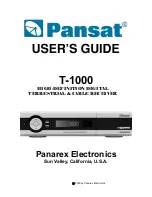
8
AM Antennas
Ferrite-rod
For operation in the broadcast band this receiver is equipped
with a moveable ferrite-rod antenna. This antenna is intended
for local reception where the signal strength is normally fairly
high, but it can under favorable receiving conditions also pick
up more remote stations efficiently. The ferrite-rod antenna is
highly directional and picks up the strongest signal when it is
at right angles to the transmitter. The antenna is hinged and
should be rotated to the position giving the best reception.
This is also possible when the receiver is placed on a shelf.
The ferrite-rod antenna can never perfectly replace a good
outdoor antenna.
NOTE!
The antenna circuit is built into the ferrite-rod casing.
When listening to AM you should always move the ferrite-
rod away from the rear panel to avoid de-tuning of the
antenna circuit. This is also important when using an
outdoor antenna.
Outdoor antenna
To give the best results an outdoor antenna should be used.
Suspend a wire 15 to 20 meters (50 to 60 feet) long at the
highest possible elevation. The best results may he obtained
by experimentation.
Connect a feeder to the terminal marked AM ANT (socket on
European version) and if the feeder is long avoid running it
too close to walls.
If you have the European version connect the
appropriate plug.
Grounding
To obtain best AM reception grounding of the receiver is
recommended. Connect the AM ground terminal (A) to the
nearest water pipe.
The grounding terminal B is designed for FM
coaxial antenna cable (U.S. model only).
The grounding terminal C is prepared for grounding of
transcription unit or record player chassises when phono
connectors are used.
Wiring of the DIN connector for phono use is shown on
the back cover.
Summary of Contents for TR-2075
Page 1: ......









































